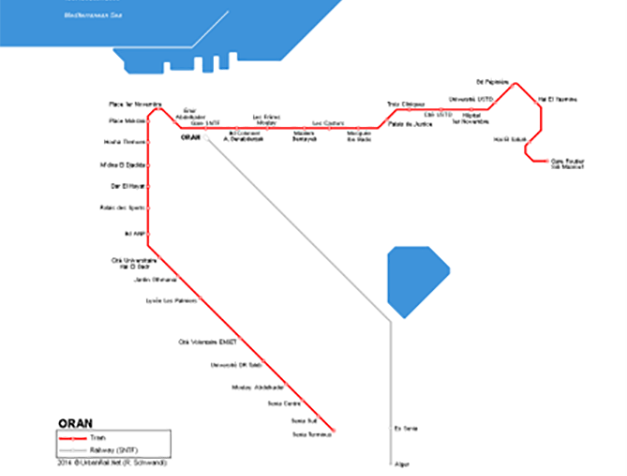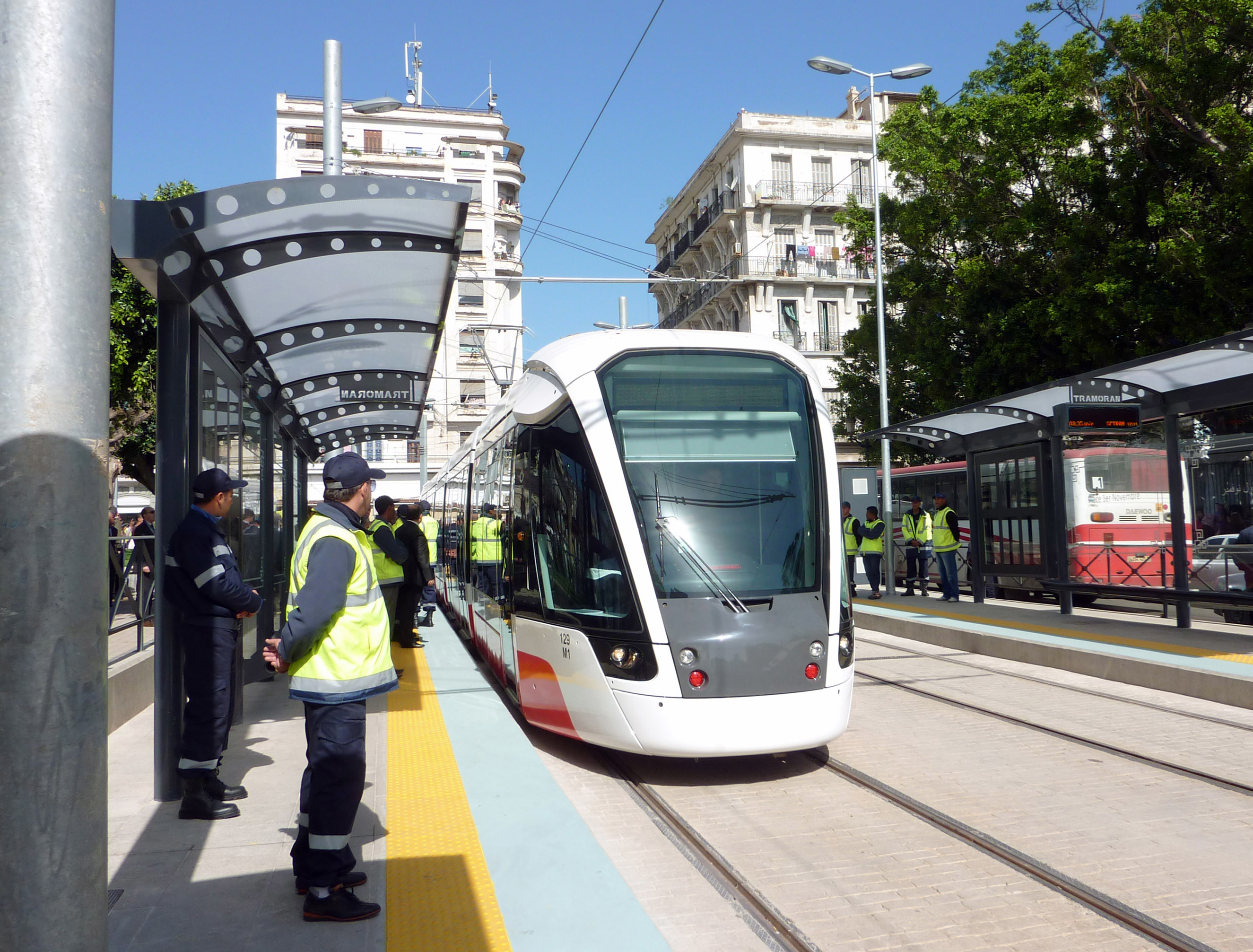
Close

Approach Words: Integrated City, Sustainability, Urban Livability
Public Policy Instruments: Physical Intervention
The Oran Tramway Project is a light-rail project in Oran, the second largest city in Algeria.1 The project is part of the Entreprise du Métro d’Alger’s (EMA) 2006 plan to build light-rails in Algerian cities and contributes to its key objectives: encouraging public transit in Algeria’s largest cities, Algiers, Oran, Constantine, Sidi Bel Abbès, Sétif, and Ouargla;i focus on “comfortable, fast, clean, and wheelchair-accessible transit”, and speeding economic growth through smooth transport.2
Initiated in 2008 and opened to the public in May 2013,3 the project has significantly impacted the city’s transportation system. The tramway spans 18.7 kilometers and includes 32 stations along a single line, extending from Depot Sidi Maarouf to Depot Senia and efficiently connecting various key areas of Oran.4 It has been designed to handle around 90,000 passengers per day, which translates to approximately 88 million passengers annually,5 and to reduce travel times by 20% to 30%, thereby improving the daily commute for residents.6

Title: Map of the Oran Tramway.
Source: Click Here

Title: Place 1er November stop of Oran Tramway.
Source: Click Here

Title: View of the Oran Tramway crossing through the city.
Source: Click Here

Title: Construction Works of the tramway.
Source: Click Here
The tramway system operates with a fleet of 30 Alstom Citadis 302 trams.7 These trams are equipped with air conditioning and low-floor designs to ensure accessibility for passengers with disabilities, as well as video surveillance and passenger information systems, enhancing the overall quality of public transport in the city.8 Each tram can accommodate 325 passengers (72 seated and 253 standing).9
The tramways in Oran, as in other Algerian cities, were constructed and operated by Algeria’s Société d’Exploitation des Tramway (SETRAM), a joint venture established in 2012 comprising RATP Dev (49%), Entreprise du Métro d’Alger (15%), and Etablissement Public de Transport Urbain et Suburbain d’Alger (36%),10 highlighting a model of public-private partnership in the sector. SETRAM claims to be actively involved in promoting economic growth in Algerian cities through local employment and skills development, having employed 650 people for its operation and maintenance in Oran Tramway, as well as other trams in Algeria11 and established a rail training institute in Algiers in 2017.12 The Tramway was operated and maintained by SETRAM for 10 years following its opening13 (2013 to 2023), and operations were re-internalised by the Public Transport Authority afterwards.14 The investment in the Oran tram project exceeded €355m.15

Owner/Developer
Construction of the Tramway was in phases. Early phases started in 2006 included feasibility studies by Ingérop, a French consultancy, and preliminary design studies by Ensistrans.16 Construction took 5 years and was completed by May 2013.17 The Oran tramway plans further expansion, including a northerly extension from the Hatab bus station to Benarba, adding 8.6 kilometers and 12 new stations to the network.18 Another extension plan is from the Depot Senia to the Oran airport, extending 5km, and the third extension plan is from USTO to Bir El Djir, covering a length of 16.5km.19
Project Link
https://www.ratpdev.it/en/references/algeria-oran-tramway
Endnotes
References